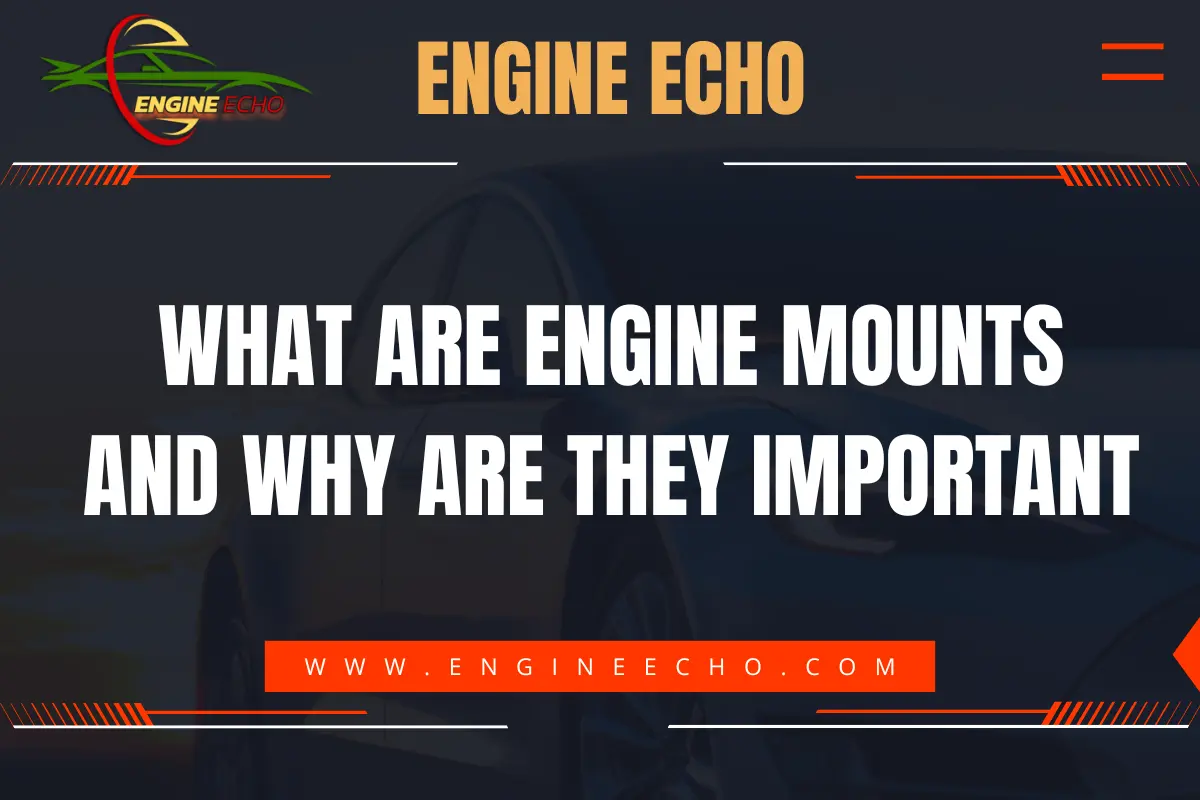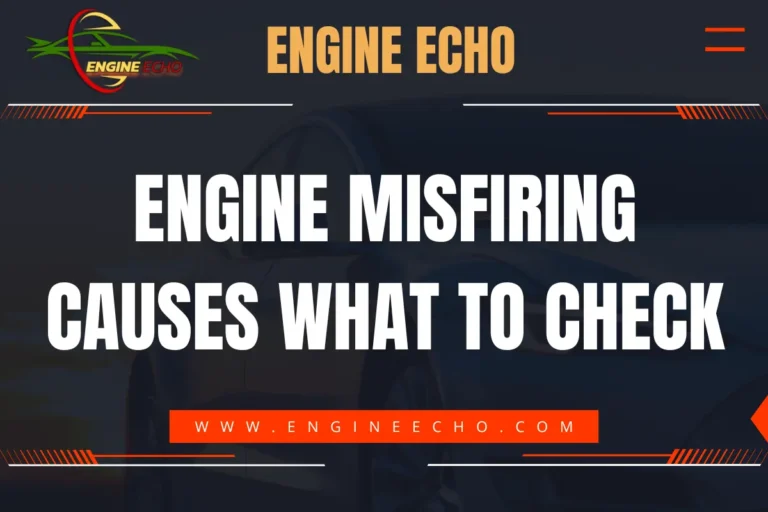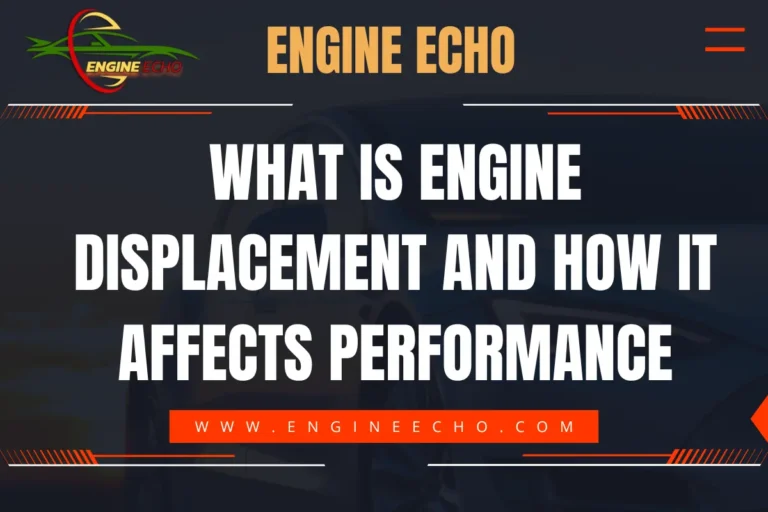What Are Engine Mounts and Why Are They Important?

Key Takeaways:
- Engine mounts keep the engine securely in place, making sure everything stays stable during your drive.
- They absorb engine vibrations, so they don’t rattle through the vehicle and ruin your comfort.
- There are different types of mounts, like rubber, liquid-filled, and polyurethane, each suited to specific needs.
- If your mounts start to fail, you’ll feel more vibrations, and your engine could shift out of place—leading to bigger issues.
- Regular checks and timely replacements of engine mounts can save you from expensive repairs down the road.
Introduction
Engine mounts might not sound exciting, but they play a huge role in how your car performs and stays safe on the road. I’ll be honest—it’s easy to ignore them until something goes wrong, but when they fail, you’ll feel it right away. Noisy rides, shaky engines, and even damage to other parts of your vehicle can happen if engine mounts are left unchecked. I’m writing this because, from experience, I know how much hassle engine mount issues can cause. A little attention here can save you a lot of time, money, and frustration.
1. Function of Engine Mounts
Securing the Engine to the Frame
Engine mounts basically hold the engine in place so it doesn’t bounce around while you’re driving. They anchor the engine to the frame and keep it lined up with other key components like the transmission and drivetrain. Without them, the engine would shift around, leading to misalignment issues that could eventually cause a lot of damage.
Absorbing Vibrations
Another big job engine mounts do is absorb engine vibrations. Without them, those vibrations would transfer directly to your vehicle, making for a really uncomfortable ride. I remember the first time I replaced old, worn-out mounts in one of my cars—the difference was huge. The annoying hum I’d been living with for months was completely gone, and the engine felt rock-solid. It’s amazing how much something so small can improve your driving experience.
2. Types of Engine Mounts
Rubber Engine Mounts
Rubber engine mounts are the most common type, and they’re a great balance between affordability and vibration control. They work well for everyday driving, but if you’re someone who pushes your car to the limit, you might want to look into something stronger.
Liquid-Filled Engine Mounts
Liquid-filled mounts take things up a notch. They’re designed to provide even smoother vibration damping, which is why you’ll find them in a lot of luxury and high-performance vehicles. I’ve used them before, and the ride quality was noticeably better. Just keep in mind, these mounts can be more expensive, and if the liquid leaks, you’ll have to deal with that.
Polyurethane Engine Mounts
If you’re all about performance, polyurethane engine mounts are probably your best bet. They’re stiffer than rubber, which means less engine movement, but they also transmit more vibrations into the cabin. I upgraded to polyurethane mounts in my last car, and while it wasn’t the most comfortable ride, I definitely noticed sharper throttle response and better handling. For those of us who like to push our cars, it’s a worthy trade-off.
3. Symptoms of Failing Engine Mounts
Excessive Engine Noise and Vibrations
When your engine mounts start to go bad, trust me—you’ll feel it. One of the first signs is a sudden increase in noise and vibrations. I remember one long road trip when I started hearing this loud, clunking noise. I thought I’d hit something, but it turned out one of my mounts had given up. That’s when I learned just how much mounts affect the ride quality.
Engine Movement and Misalignment
Another big warning sign is when your engine feels like it’s shifting around, especially when you’re accelerating or changing gears. Every time I shifted, my car would feel jerky and out of balance—it was a clear sign the mounts weren’t doing their job. Once I replaced them, everything felt smooth again.
Clunking and Banging Sounds
If you hear a clunking or banging sound when you accelerate, brake, or make a sharp turn, your engine mounts could be the problem. I once ignored this noise for too long, thinking it was something minor, but it ended up costing me a lot more when I finally had to replace the mounts and fix the extra damage they caused.
4. Causes of Engine Mount Failure
Wear and Tear
Over time, engine mounts just wear out. If you’re driving a lot, or your car is older, the rubber in the mounts can crack or degrade. I’ve learned that catching this early during regular inspections can save you from bigger issues down the road.
Overloading and Engine Stress
If you’re towing heavy loads or driving aggressively, your mounts can wear out faster. I’ve had this happen when I was regularly towing—my mounts couldn’t keep up, and they started to fail sooner than expected.
Environmental Factors
Heat, oil leaks, and rough road conditions can speed up the wear on your engine mounts. I once had a small oil leak that I ignored, and it ended up degrading the mounts much faster. It’s a good reminder that even small issues can lead to bigger problems if they’re left unattended.
5. How to Inspect Engine Mounts
Visual Inspection
It’s easy to overlook, but a quick visual inspection of your engine mounts can save you a lot of trouble. Look for cracks, tears, or signs of wear. I once caught a failing mount just by taking a peek under the hood after hearing some strange noises—checking it early saved me from a more expensive repair later.
Listening for Noises
Your car will often give you hints when something’s wrong. If you hear clunks or feel unusual vibrations, don’t ignore them. Those sounds are often the first signs that your engine mounts are on their way out.
Engine Movement During Gear Shifts
Excessive engine movement when shifting gears can also signal failing mounts. I’ve seen cars where the engine moved so much it affected the transmission, which can lead to even bigger issues if not dealt with quickly.
6. Impact of Faulty Engine Mounts on Vehicle Performance
Increased Vibrations
If your mounts fail, you’ll feel those vibrations right away. It’s annoying, and worse, it can cause other problems too. I once let this go in an older car, and it didn’t take long for parts like the exhaust system to start wearing out faster because of all the extra movement.
Engine Misalignment and Transmission Damage
When engine mounts fail, it’s not just uncomfortable—it can cause serious damage to other parts of your vehicle. Engine misalignment puts extra stress on the transmission, and I’ve had to deal with transmission repairs that could’ve been avoided if I’d just replaced the mounts sooner.
Reduced Safety
A loose engine is a safety risk. While I haven’t experienced a full mount failure in an accident, I’ve seen what happens when they give out. It’s not something you want to deal with, especially in a critical moment. Keeping your mounts in good shape ensures your engine stays secure, even in extreme situations.
7. Replacing Engine Mounts
When to Replace Engine Mounts
Engine mounts typically last about 5 to 7 years, but how long they actually last depends a lot on how you drive and what conditions your car goes through. Personally, I’ve found that replacing them sooner rather than later is a good move—it’s better to avoid potential issues than deal with a breakdown later on.
Professional Replacement vs. DIY
If you’ve got experience with car repairs, you can replace engine mounts yourself, but I’ll be honest—sometimes it’s worth letting a pro do it. I’ve tried both, and while I’ve successfully replaced mounts on my own, I’ve also had times where a professional job would have saved me some headaches.
Cost of Replacement
Engine mounts aren’t the cheapest to replace, but compared to the damage a failing mount can cause, it’s money well spent. Expect to pay anywhere from $200 to $600, depending on your vehicle and whether you choose rubber, liquid-filled, or polyurethane mounts.
8. Upgrading Engine Mounts for Performance
Benefits of Upgraded Mounts
If you’re serious about performance, upgrading to stiffer mounts like polyurethane is a no-brainer. After switching to these in my car, I immediately felt better throttle response and more control during aggressive driving. Sure, the ride is a bit rougher, but for the improved performance, it’s a trade-off I’d make any day.
Engine Mount Upgrades for Off-Roading
Off-roading can put a lot of stress on your engine mounts. If you’re into off-roading like I am, stronger mounts are a must. They’ll hold up better against the constant jolts and vibrations from rough terrain, keeping your engine secure no matter what you’re driving through.
9. Case Study: Engine Mount Failure in a Vehicle
Real-World Example
A few years ago, my 2010 Toyota Camry started making this awful noise. After a quick inspection, it turned out the rubber engine mounts had degraded from years of heat and oil exposure. Replacing the mounts made a world of difference—vibrations were gone, and the ride felt smooth again. If I’d caught the problem sooner, I could’ve avoided some extra wear on the drivetrain.
Cost of Repairs vs. Prevention
I ended up spending about $500 on repairs, but it could have been less if I’d addressed the issue earlier. It’s a classic case of why regular maintenance is always the cheaper option in the long run.
10. Maintenance Tips for Extending Engine Mount Lifespan
Regular Inspections
Make checking your engine mounts part of your regular maintenance routine. It’s a quick inspection that can prevent bigger, more expensive problems. I can’t tell you how many times I’ve seen a small issue like a cracked mount turn into something much worse just because it wasn’t caught early.
Avoiding Excessive Stress
How you drive has a big impact on how long your engine mounts last. Towing heavy loads or aggressive driving puts extra stress on them, so being mindful of that can help extend their lifespan.
Using High-Quality Engine Mounts
Investing in high-quality mounts is something I highly recommend. It’s tempting to go for the cheapest option, but in my experience, better materials lead to longer-lasting parts, and in the end, you save money by not having to replace them as often.
Conclusion
Engine mounts may not get a lot of attention, but they’re essential for keeping your car running smoothly. I’ve seen firsthand how much of a difference they make when properly maintained, and how ignoring them can lead to bigger, more expensive problems. By keeping an eye on your engine mounts and replacing them when needed, you’ll not only improve your driving experience but also save yourself a lot of trouble in the long run. Trust me—keeping up with this small part of your car can have a big impact.
FAQs
- What are the signs of a bad engine mount?
Common signs include excessive vibrations, unusual engine movement, clunking noises, and engine misalignment. - How often should engine mounts be replaced?
Engine mounts generally last 5 to 7 years, but regular inspections will help you catch any issues sooner. - Can I drive with a broken engine mount?
Driving with a broken mount isn’t a good idea. It can lead to misalignment and other costly damage if left unchecked. - Are polyurethane engine mounts better than rubber ones?
Polyurethane mounts are more durable and better suited for performance driving, but they do transmit more vibrations into the cabin. - How much does it cost to replace engine mounts?
Replacing engine mounts can cost anywhere between $200 and $600, depending on the type of vehicle and the mounts used.
Thanks for checking out this article on EngineEcho.com! Hope you found this article: "What Are Engine Mounts and Why Are They Important?" helpful! If you liked it and want to dive into more car engine topics, head over to our homepage. There's always something new to discover in the world of engines. Enjoy your reading journey!
Check out our previous article: How to Boost Your Engine's Power






